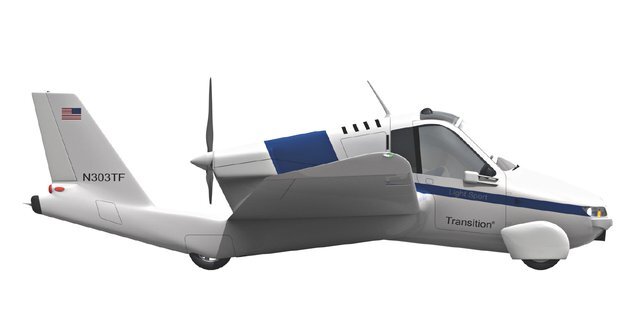Flygen: The Future of Sustainable Aviation
Introduction
In today’s fast-paced world, the need for sustainable travel options is becoming more pressing. Aviation, while essential for global connectivity, has long been associated with high carbon emissions and environmental impact. However, Flygen is emerging as a game-changer, offering innovative solutions to make flying greener and more efficient. This cutting-edge technology is gaining attention for its potential to reshape the future of aviation. In this article, we’ll explore what Flygen is, how it works, and why it’s a significant breakthrough in the quest for sustainable air travel.
Whagt is Flyen?
Flygen is a term associated with the next generation of eco-friendly aviation technology. It combines advancements in alternative fuels, electric propulsion, and hybrid aircraft designs to minimize the environmental footprint of air travel. Essentially, Flygen aims to create aviation solutions that reduce carbon emissions, noise pollution, and dependency on fossil fuels, all while maintaining high levels of efficiency and safety.
The Importance of Sustainable Aviation
As the world moves toward cleaner and more sustainable industries, the aviation sector has been under increasing pressure to reduce its impact on the environment. According to recent studies, aviation accounts for approximately 2-3% of global carbon emissions. With rising concerns over climate change, the need for innovative technologies like Flygen has never been more critical.
Flygen addresses this challenge by focusing on three main pillars: fuel efficiency, renewable energy, and minimizing emissions. Let’s take a closer look at how it achieves these goals.
Key Technologies Behind Flygen
1. Alternative Fuels
One of the core elements of Flygen technology is the use of sustainable aviation fuel (SAF). These fuels are derived from renewable sources such as plant-based oils, algae, or even waste materials. SAF reduces the carbon footprint of conventional jet fuel by significantly lowering emissions throughout the fuel lifecycle.
2. Electric and Hybrid Propulsion
Flygen is not just about using alternative fuels; it also involves harnessing electric propulsion and hybrid power systems. Electric-powered aircraft are seen as a game-changer, especially for short-haul flights, as they eliminate the need for traditional jet engines and fuel. Hybrid systems combine electric motors with conventional engines, further improving fuel efficiency and reducing emissions.
3. Advanced Aircraft Designs
To maximize the efficiency of these fuels and propulsion systems, Flygen also focuses on advanced aircraft designs. This includes lighter materials, aerodynamically optimized structures, and better insulation to reduce energy consumption during flight. Innovations in materials such as carbon fiber and composite materials are also playing a significant role in reducing aircraft weight, leading to better fuel efficiency.
Benefits of Flygen Technology
Reduced Carbon Emissions
By utilizing sustainable fuels and electric propulsion systems, Flygen technology helps airlines reduce their carbon emissions. For example, SAF has been shown to reduce emissions by up to 80% compared to conventional jet fuel, making it a crucial component of sustainable aviation.
Cost Efficiency
While the initial investment in Flygen technologies may be high, the long-term cost savings are significant. More efficient aircraft designs and propulsion systems lead to reduced fuel consumption and lower operating costs for airlines. This is especially important as fuel prices continue to fluctuate, making fuel-efficient solutions even more valuable.
Enhanced Passenger Experience
Flygen is not just about the environment—it also promises to enhance the passenger experience. With quieter engines and smoother flights, passengers can enjoy more comfortable journeys. Additionally, the shift to electric and hybrid propulsion could lead to reduced noise pollution at airports, benefiting both passengers and nearby communities.
The Future of Flygen
It represents the future of aviation, and its widespread adoption could transform the industry in the coming decades. While many of these technologies are still in the development phase, significant strides have already been made. As governments and private companies invest in research and development, we can expect more breakthroughs that will bring Flygen from concept to mainstream reality.
Conclusion
It is not just a trend—it’s the future of sustainable aviation. By combining alternative fuels, electric propulsion, and advanced aircraft designs, this technology promises to significantly reduce the carbon footprint of air travel while maintaining efficiency and passenger comfort. As the aviation industry continues to evolve, Flygen could be the key to achieving greener skies.
FAQs
1. What makes Flygen different from traditional aviation?
It focuses on using sustainable aviation fuel, electric propulsion, and advanced aircraft designs to reduce emissions and fuel consumption. This contrasts with traditional aviation, which relies on fossil fuels and conventional engine technology.
2. How does it reduce carbon emissions?
Flygen technology uses sustainable aviation fuel (SAF) and electric/hybrid propulsion systems, both of which significantly lower carbon emissions compared to traditional jet fuel.
3. Is Flygen technology available today?
While Flygen technologies are still in the development phase, several prototypes and test flights have already demonstrated the potential of electric and hybrid-powered aircraft.
4. How will Flygen impact ticket prices?
Initially, the cost of Flygen technology may lead to higher ticket prices, but in the long run, reduced fuel and operational costs could help lower fares for passengers.
5. Can Flygen be used for long-haul flights?
While Flygen technologies are currently more suitable for short-haul flights, advancements in battery technology and hybrid systems may eventually make long-haul flights more feasible.
